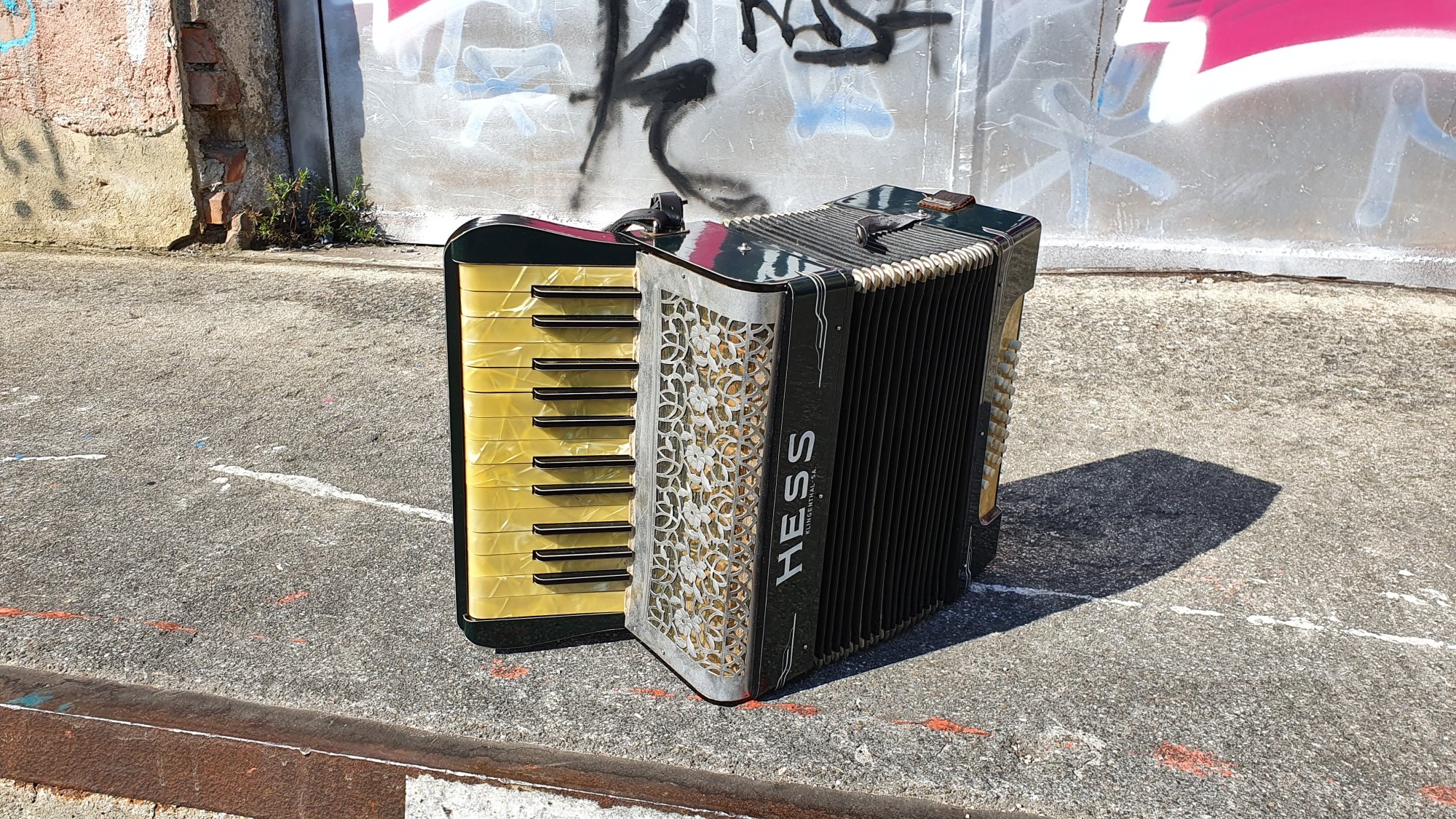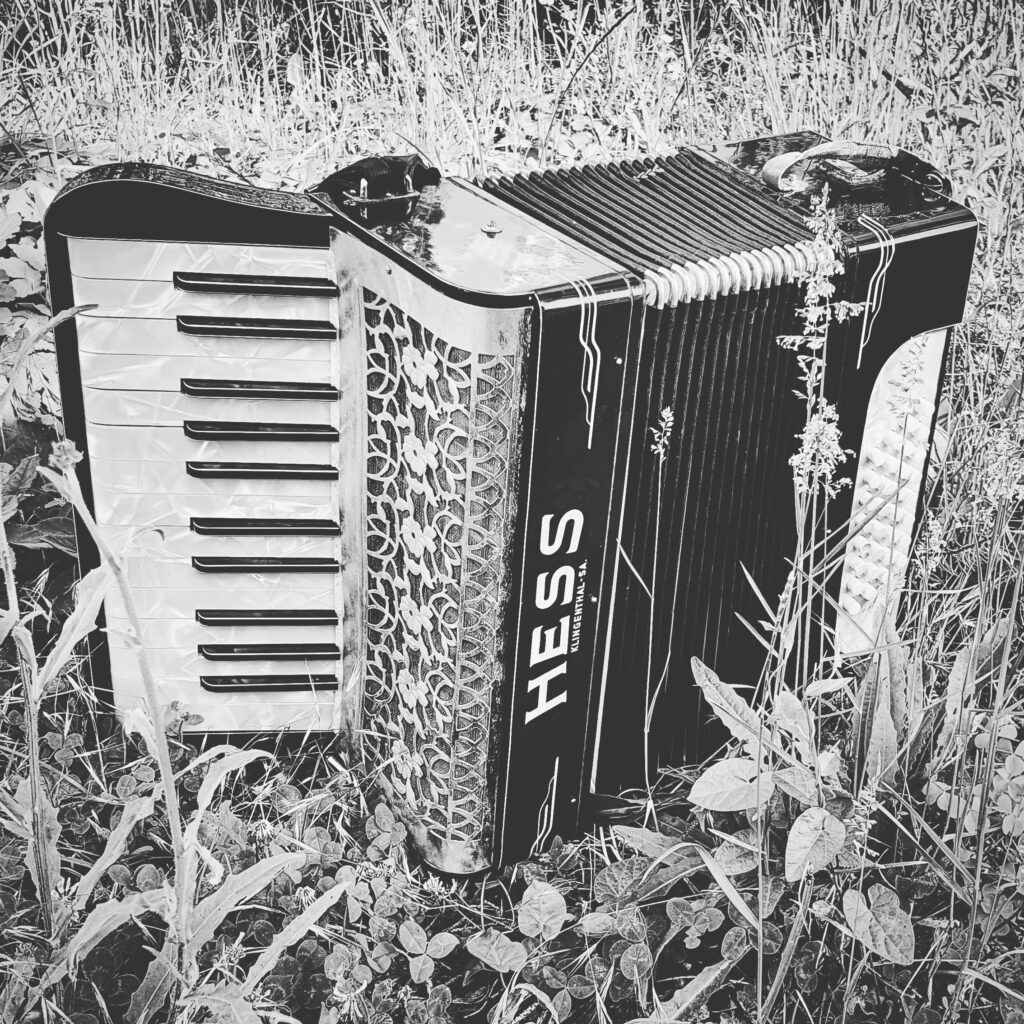4 Quiet Pieces for Accordion in Just Intonation
Composition and Accordion: Mathis Nitschke
Just Intonation
I improvised and recorded these pieces on a Hess accordion from 1941, which I had tuned to a just intonation by the restorer Philip Böttcher. “Just intonation” means that the tones of the scale, as in the overtone series, are based on a natural, integer relationship to the fundamental. A fifth G is in a ratio of 2/3 to the fundamental C I have chosen here, the fourth F in a ratio of 3/4, the third E in a ratio of 4/5, and so on, always following the overtone series.
Why Just Intonation?
The just intonation differs clearly from the usual equal temperament in its sound but also in its practicability. On this accordion a third C-E sounds clear and free from beating, while the third B-D, for example, sounds totally sloped and crooked. This offers not only the possibility of playing particularly pure sounds, but also, in a particularly charming way, to play wonderfully iridescently “wrong”. This “wrong sounding” is not the result of a randomly detuned accordion, but is determined in an audibly conscious and concrete way.
This little waltz aims to sound “wrong” in a particularly beautiful way, and therefore is played in B flat minor, on the accordion tuned in C:
Dedication
The starting point for this approach are the “Four Pieces for Barrel Organ” by my composition professor Gilius van Bergijk, which for me are among the saddest music in the world. His idea here was to abuse a diatonic, purely tuned barrel organ from the Amsterdam Orgelpark by using it in a “wrong” key in such a way that it sounds particularly sad. An idea that I have been carrying around with me for 20 years, and now I am finally transforming it into my own artistic approach. Thanks, Gilius.



